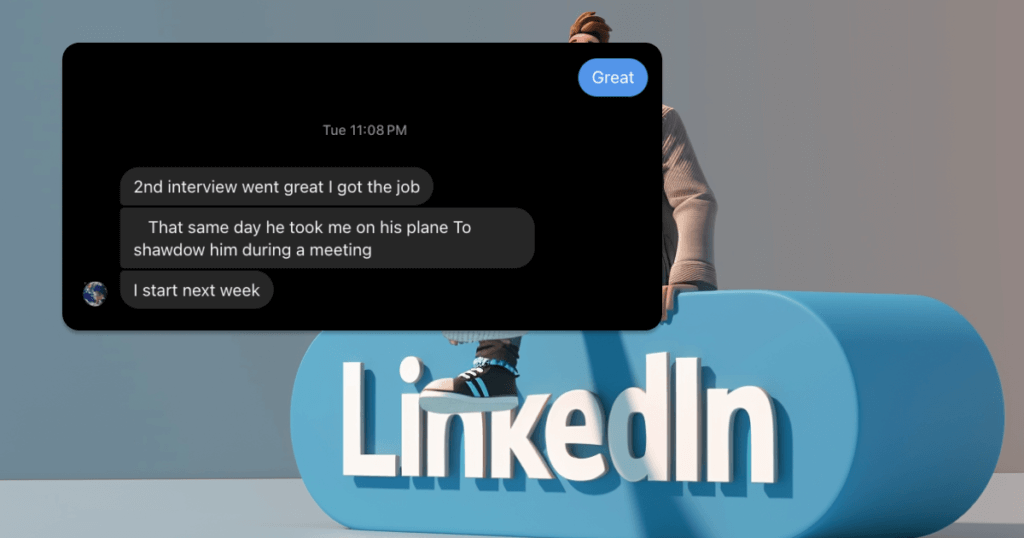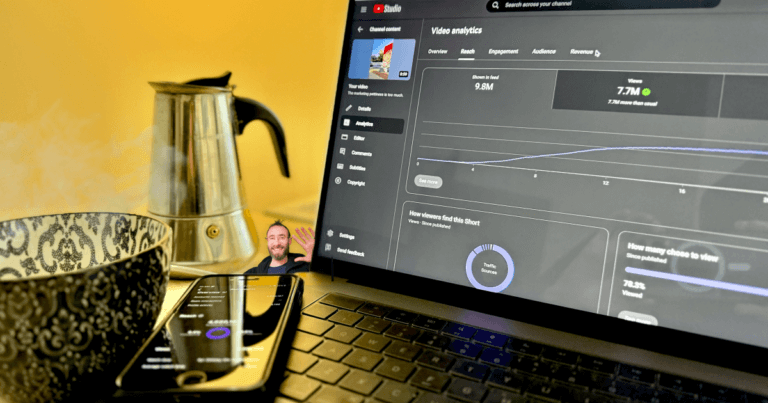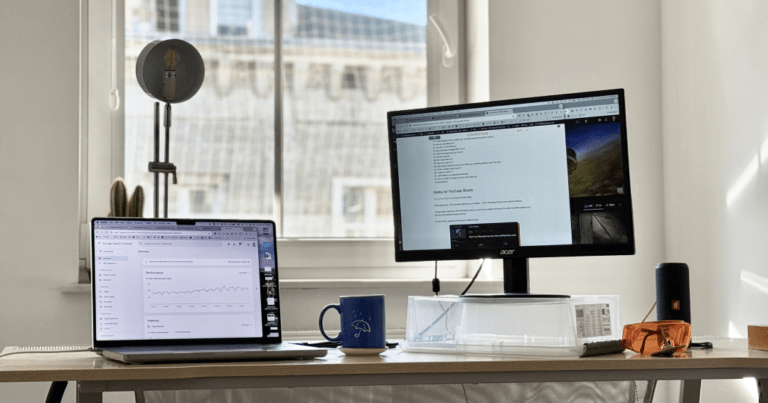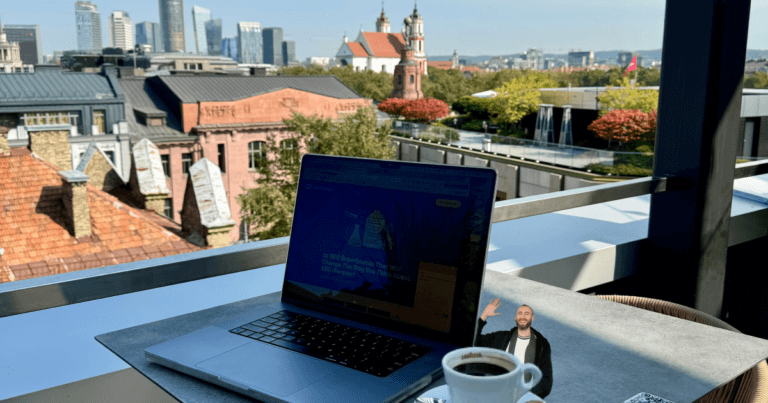I hacked LinkedIn in 2016 and went from unemployable to recruiters reaching out in a month.
Then I made this podcast about it. This guy (David Castillo) listened to the podcast and used what I said to get hired in TWO WEEKS:

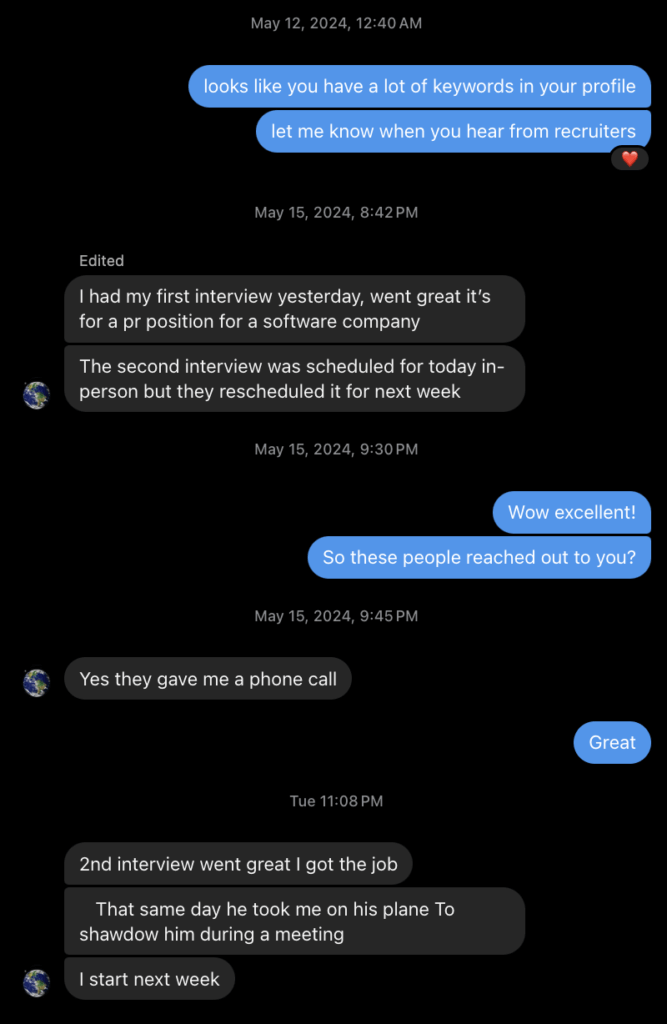
Jump Ahead
LinkedIn is a search and recommendation engine
LinkedIn is better seen as a search engine than a social network.
But with this search engine, keyword stuffing doesn’t just work; it’s encouraged.
You want to have your page stuffed to the brink with every phrasing of tasks you might perform in your job along with all the tools you might have to use.
When I did this to my LinkedIn, I didn’t have the luxury of generative AI to help me think of synonyms. If I was doing this now, I’d use ChatGPT or Gemini to help me think of tasks and tools to add.
LinkedIn is also a recommendation engine, and this added detail helps LinkedIn know where to recommend you.
Here’s a screenshot from my LinkedIn in 2016 when I was trying to get SEO recruiters to reach out (what you see in this screenshot got me hired at one of the best SEO agencies in the world doing SEO for blue chip companies):

The rule of thumb is:
- Put your niche and a few synonyms for it in your Headline.
- Put a super thorough About section.
- Bullet out accomplishments.
- Put tons of tasks you might perform in your position (anything you can think of that would be done on the job).
- Put in all the tools you might have to use.
- Below is a screenshot of David Castillo’s LinkedIn About (feel free to add him). Notice how it has tons of tasks and tools.
- Make each job summary you held packed tight with tasks, synonyms of tasks, and every tool imaginable (my screenshot above is a good example of this). Again, bullet things out so it’s easy to read.
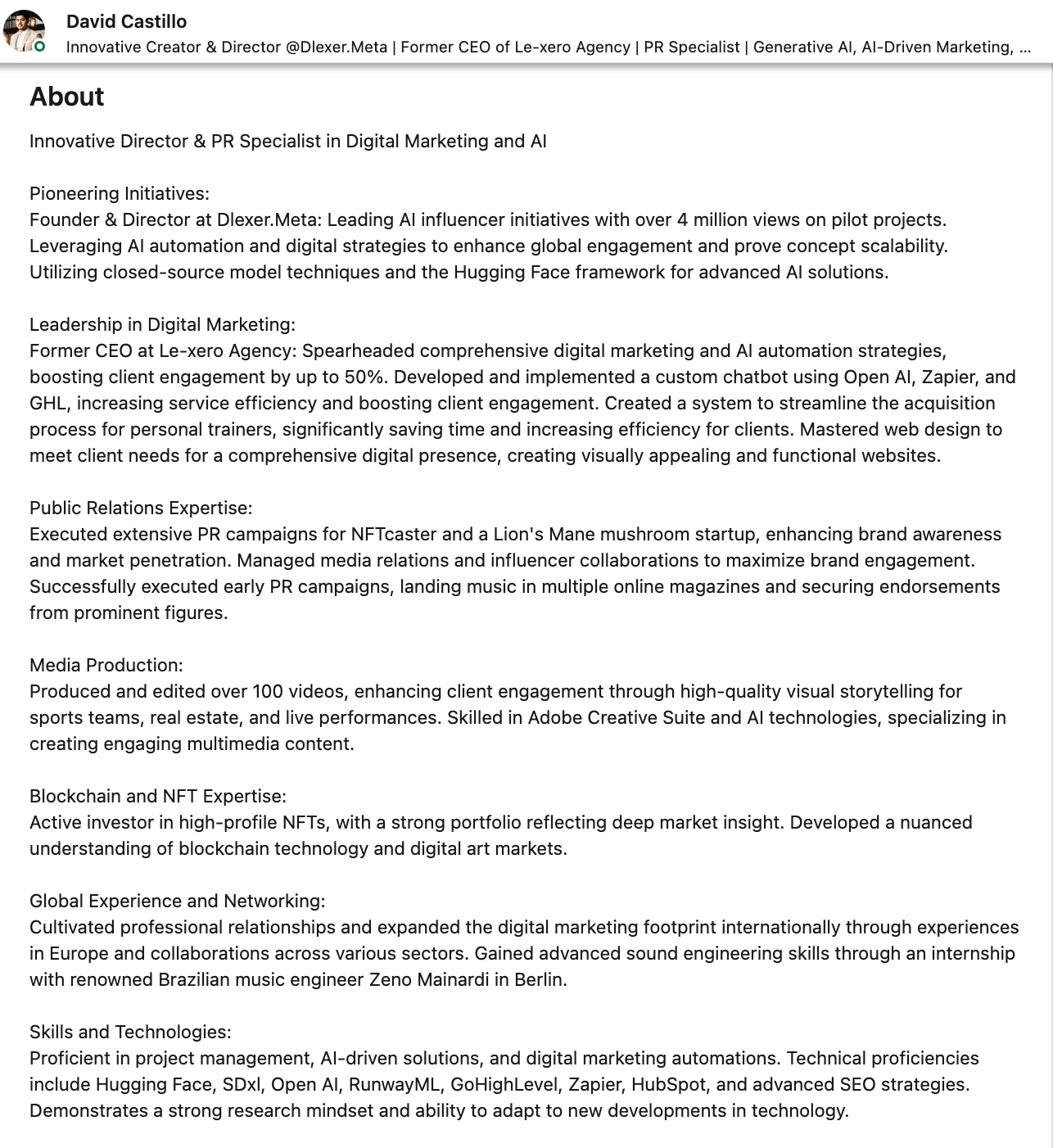
Use action words
This one’s simple.
Use action words.
Examples:
“Achieved, Managed, Delivered, Improved, Optimized, Enhanced, Generated, Spearheaded, Increased, Transformed.”
ChatGPT and Gemini are excellent at helping to think of these, by the way.
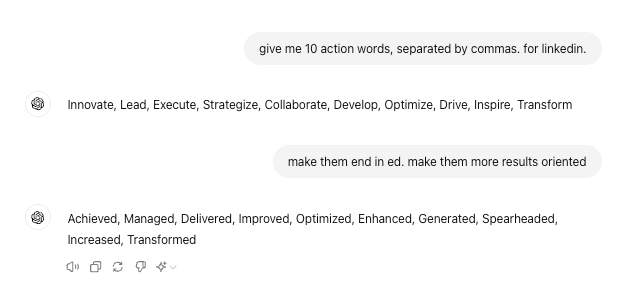
Show results
This is the last one.
Pre-2016 I actually didn’t have a LinkedIn.
It was my close friend Ashley Zernich who became a recruiter and showed me what other recruiters were looking for on LinkedIn.
She taught me to add a ton of detail to my LinkedIn, to add action words, and to add results.
I still remember like it was yesterday, her stressing, “People want to see results.”
So wherever I could, I’d add in results, no matter how minimal.
Here’s an example from my LinkedIn, and then from David’s.

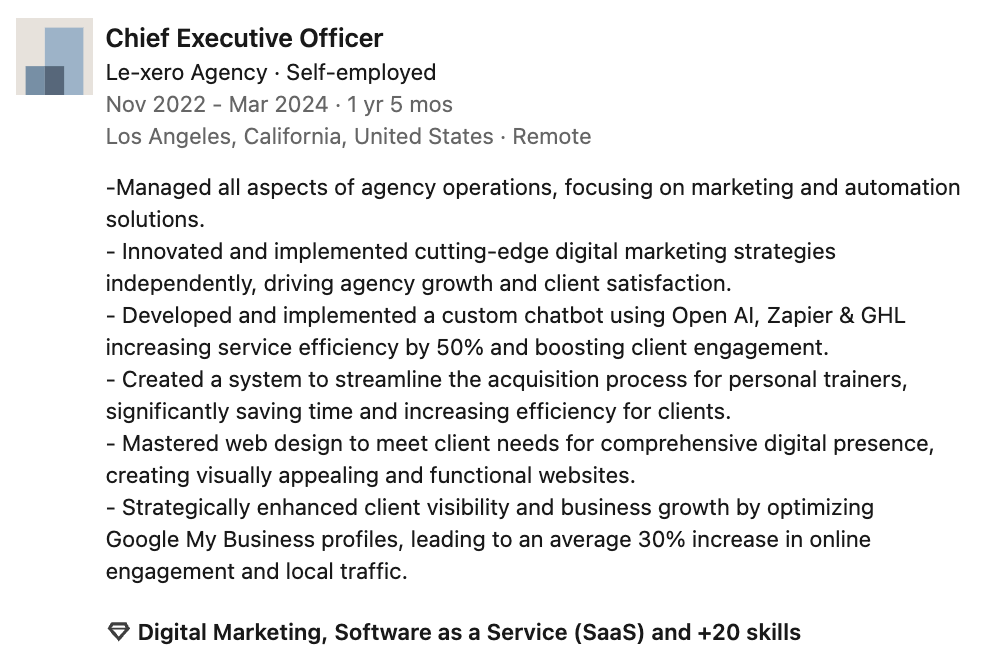
Connections
Once your profile is updated, get as many connections as you can with people you know in real life. Think of everybody you’ve ever met, especially in a work context, and add them.
Connections help the algorithm prioritize relevant people.
If you’re not in a major area like NYC, or San Francisco, etc, it’s okay. Look for people in your industry who are there. Connect with them and give them a unique compliment or reason you want to connect. It could even be transparent, “I’m looking to connect with more people in my industry in major American cities.” Adding context will make people more likely to accept the connection.
Use Featured section & Experience section examples
Utilized the “Featured” section right under the About section. Add links and make sure those links have a thumbnail, title, and description.
Then do the same for your roles and experience. Notice in the second image below, under “Production Assistant,” I have media with corresponding titles and descriptions.
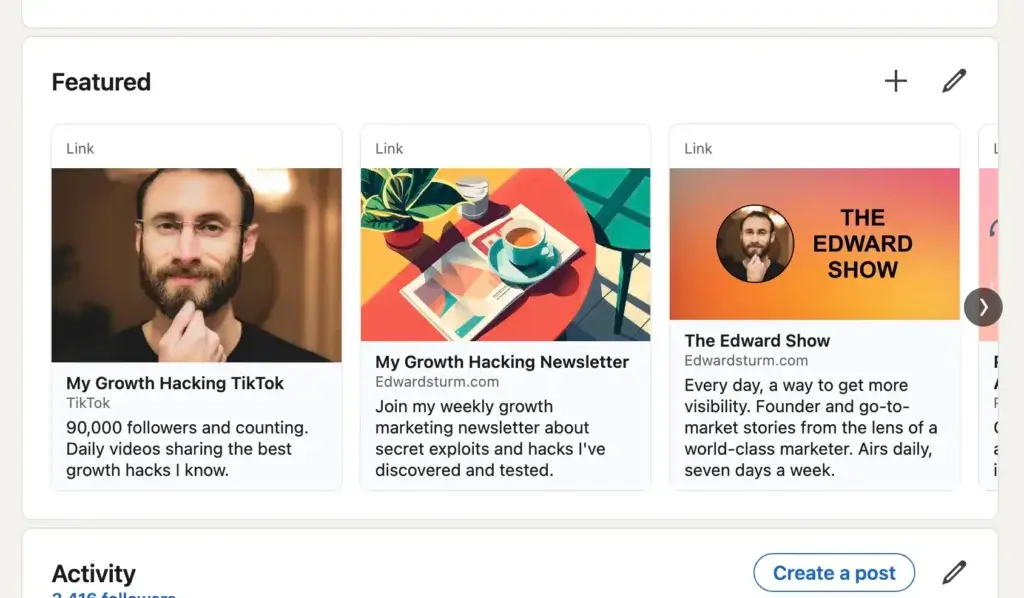
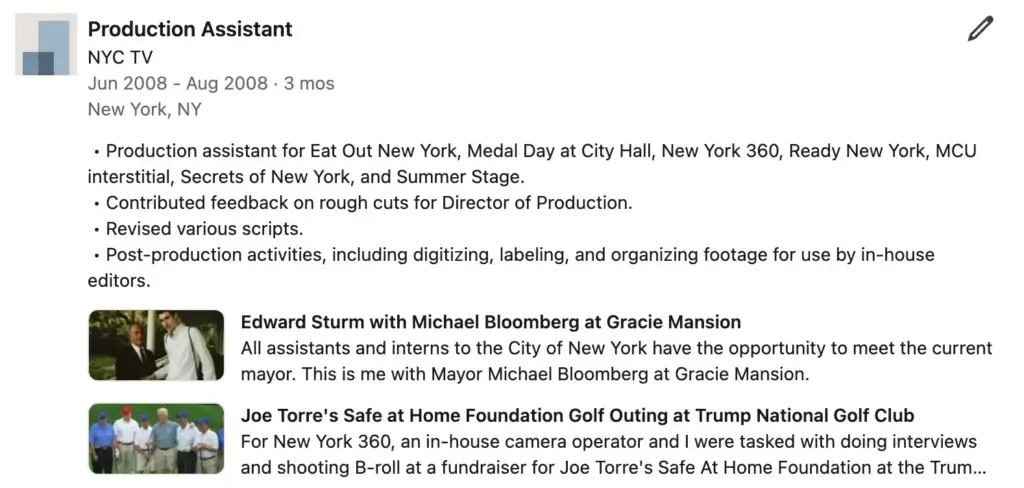
Honorable mentions
Here are some bonus things to do.
- Get written recommendations from anybody you can. When I did my LinkedIn in 2016 I valued recommendations so highly I even asked my website developer (who I was paying and not the other way around) to give me a recommendation. In fact if you go to my LinkedIn, scroll to recommendations at the bottom, and go back in time you can see all the recommendations I got in 2016.
- Recommendations are great because they’re hard to fake. People can click on profiles and see that they’re real active people, which makes you look legitimate.
- Give recommendations. This has a few benefits:
- Giving recommendations makes it easier to get them.
- The activity on your LinkedIn page helps LinkedIn know who to show your profile to.
- Giving recommendations makes people like you more.
- Please feel free to give me a recommendation, and I will like you more 🙂
- When your profile is fully updated with all the extra details, let your network know it’s updated.
Open to Work
This one’s a personal preference, but don’t don’t put “Open to Work” on your profile picture.
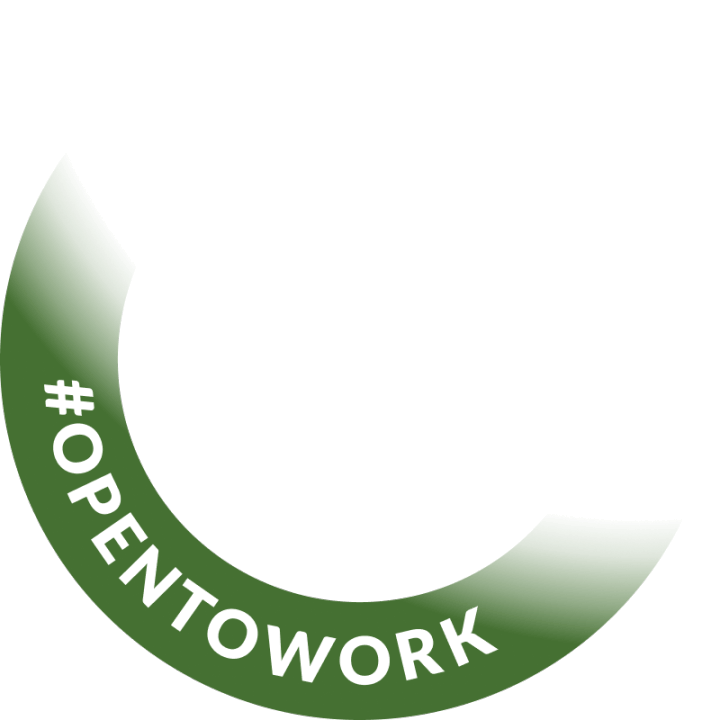
It makes people look desperate, and that’s not attractive to recruiters, employers, or anybody else.
In 2016 when I got the job and was employed it made recruiters and hiring managers reach out to me EVEN MORE.
People won’t reach out because your profile says Open to Work; they’ll reach out because you look competent and in demand, and your profile was recommended by LinkedIn because it was so highly optimized.
What to prioritize
The Pareto Principle of this all, in terms of what to prioritize, is:
- Add lots of keywords around tasks you might perform and tools you might use. Add as much as you can.
- Get as many recommendations as you can.
- Get as many connections as you can.
- Add as many examples as possible.
These 20% of LinkedIn optimizations will get you 80% of the results.
The podcast
If you want to hear me go in-depth on LinkedIn, here’s my podcast that David listened to get him hired.
In it, I also provide details on how I added results to my LinkedIn (what I did when I wanted more results) and what I did once the recruiters started reaching out.

